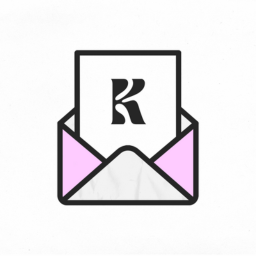Sam Altman says OpenAI may explore ads in ChatGPT
Rising costs and revenue goals are driving monetization talks across AI platforms

Get Smarter at Marketing
OpenAI CEO Sam Altman is no longer ruling out ads in ChatGPT. Speaking on the company’s debut podcast episode, Altman addressed a question on whether ads might eventually appear inside the chatbot. His answer was far from definitive, but it showed a clear shift.
“We haven’t done any advertising product yet,” Altman said. “I’m not totally against it.” He added that while he personally likes ads on platforms like Instagram — “I bought a bunch of stuff from them” — any move toward monetization through ads would “take a lot of care to get right.”
That is a softer stance compared to what he said at Harvard Business School back in 2024, where he described advertising as a “last resort.”
Reports point to ads coming to ChatGPT by 2026
In April, reports citing internal documents suggested OpenAI may introduce ads to ChatGPT in 2026. The documents pointed to a strategy focused on monetizing free-tier users through ads.
This lines up with earlier remarks from OpenAI’s CFO, Sarah Friar, who said in December that the company was open to exploring new revenue streams. However, she also clarified that OpenAI had “no active plans to pursue advertising.”
Altman says paid content could undermine trust
As OpenAI explores the idea of ads, Altman stressed that trust is the top concern. On the podcast, he made it clear that tweaking the chatbot’s responses based on who pays more would be a “trust-destroying moment.”
“If we started modifying the output, like the stream that comes back from the LLM, in exchange for who is paying us more, that would feel really bad,” he said. He compared it to platforms like search engines or social media, where users often know their experience is shaped by commercial interests.
According to Altman, “How much do you believe you’re getting the thing that the company actually believes is the best content for you versus something that’s also trying to interact with the ads?”
The statement could mean that OpenAI, if it ever rolls out advertising, wants to avoid the kind of algorithmic influence that has made trust a challenge on other platforms.
Why ads are back on the table
Until now, OpenAI has managed to run ChatGPT without ads. That is largely because of funding from investors. In March, the company raised $40 billion in private funding. OpenAI also recently landed a $200 million contract with the U.S. Department of Defense.
But the scale of operations is costly. The company reportedly spends between $3 billion and $4 billion annually to keep ChatGPT running. With projections showing $12.7 billion in revenue for 2025 and as high as $174 billion by 2030, pressure to diversify income sources is rising.
ChatGPT was completely free until 2023. That changed with the introduction of ChatGPT Plus, its paid model priced at $20 monthly. Still, OpenAI continues to serve a large pool of free users, making advertising a tempting way to monetize them without locking access behind a paywall.
Competitors are already doing it
OpenAI isn’t the first to try ads inside a chatbot. Perplexity AI, a rival search startup, began testing ads in its AI answers in late 2024. Google’s Gemini is also exploring native advertising formats inside AI-generated content.
%20(1).png)
in the world of marketing:
